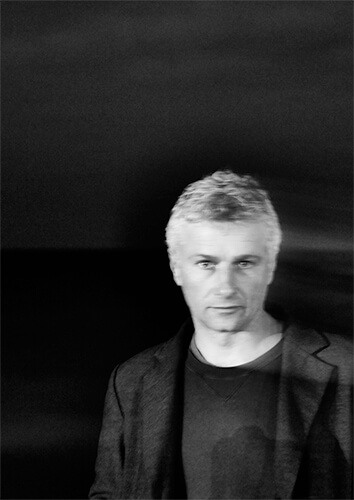My earliest professional experience dates from 1993 when I moved to Australia, as an assistant in advertising photography. Returning to Italy a few years later, I chose to concentrate my attention on commercial photography and personal work.
At the age of 16 I had the great good fortune, especially living in Italy, a country not widely known for big waves, of discovering the joy of surfing. From that moment forward was born a strong link with the sea that still today profoundly influences my life choices, both professionally and personally.
The presence of the sea in my daily life represents something extremely important to me onto which I project fear, dreams, hope and receiving in return inner strength and mental clarity.
The choice of placing the sea centre stage in my life positively affects my personal work which, in truth, is born from this choice. In short, it is the place above all other places where I prefer to be.
In an entirely natural way, in my personal work there has evolved a current of romanticism, reflected above all others in my love of the work of J.W Turner. This does not surprise me as with the sea I co habit with the virtues of force, elegance and simplicity. I recognise the sea in front of me as my ancestral home, it’s force and vastness make me feel small and vulnerable, yet, at the same time, it indicates to me a pathway, an example to follow or even a point of arrival.
In 2008, motivated by the desire to remain in close contact with the ocean, I decided to divide my time between Italy and Portugal. Attracted by this country, bathed by a stupendous and vigorous sea, I found a good balance between a European lifestyle and a strong contact with nature.
Today, I principally divide my time between Tuscany, Lisbon and the southern coast of Portugal where frequently I take refuge in my motorhome hideaway in search of intimacy with the ocean.
My works have been recognized in many photography awards including, Sony World Photography Awards, International Photography Awards, Black and White Photography Awards, Hasselblad Masters and others.
